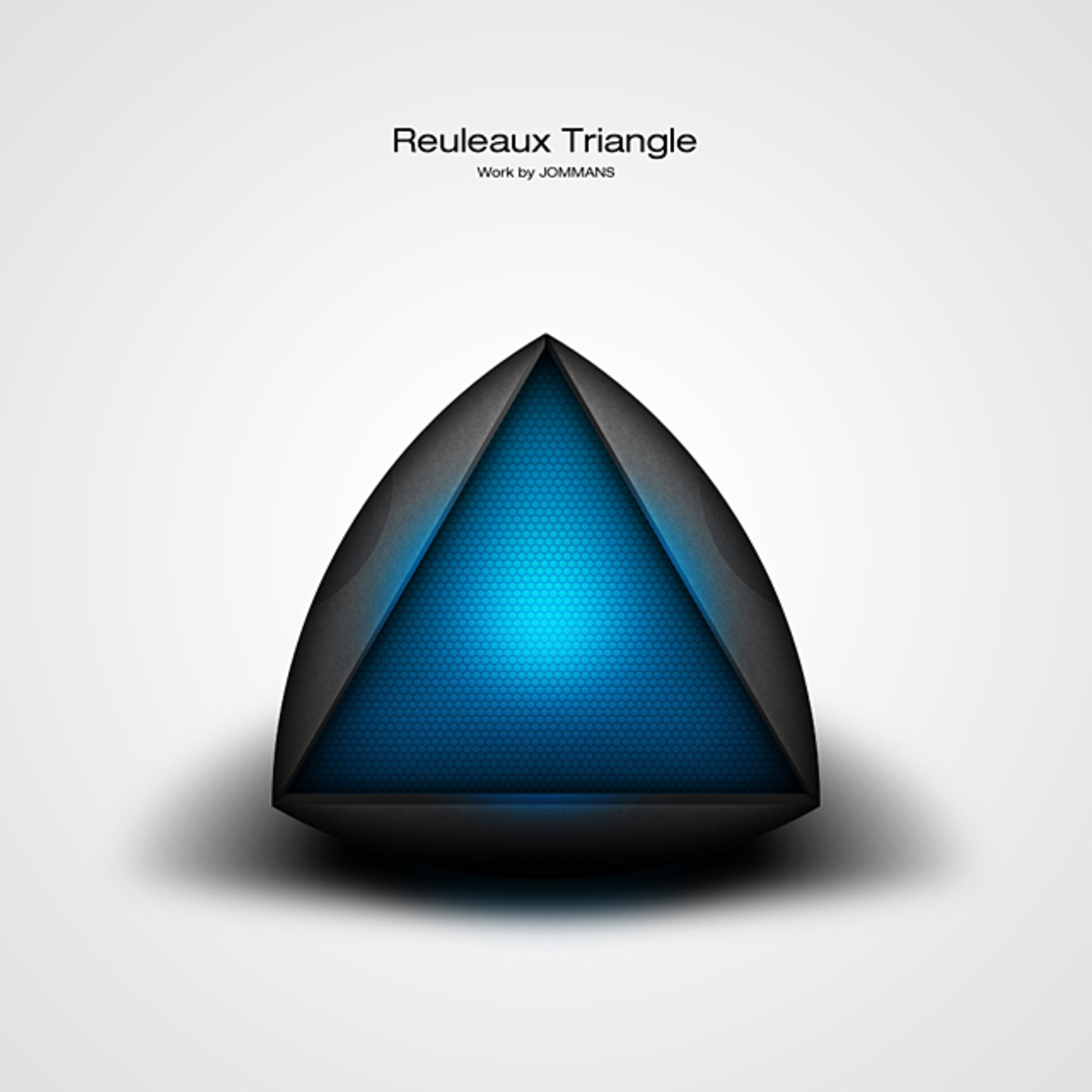Reuleaux's Revolution
 The
Reuleaux triangle
is constructed by drawing an equilateral triangle
X
Y
Z
and drawing the three circular arcs:
Y
Z
with center
X
,
X
Z
with center
Y
, and
X
Y
with center
Z
.
When this figure is rotated about it's axis of symmetry it forms a solid
of constant width the
Reuleaux Triangle Spheroform
.
The
Reuleaux triangle
is constructed by drawing an equilateral triangle
X
Y
Z
and drawing the three circular arcs:
Y
Z
with center
X
,
X
Z
with center
Y
, and
X
Y
with center
Z
.
When this figure is rotated about it's axis of symmetry it forms a solid
of constant width the
Reuleaux Triangle Spheroform
.
Let A be the apex point, B be the bottom point, and C be the centroid point, all of which are on the axis of revolution. Find A B A C .
Give your answer to 4 decimal places.
The answer is 0.6166.
This section requires Javascript.
You are seeing this because something didn't load right. We suggest you, (a) try
refreshing the page, (b) enabling javascript if it is disabled on your browser and,
finally, (c)
loading the
non-javascript version of this page
. We're sorry about the hassle.
1 solution
How did you know that?
Log in to reply
Pappus's centroid theorem!
Log in to reply
Can you show how it's done because I doubt it's something elementary. Thanks
Log in to reply
@Pi Han Goh – I agree, that's a lot of hand-waving here, I have no idea how Rose has done it here. Which is something I'm frequently guilty of myself! But the answer is correct. For a solid of revolution, the centroid is found by this general formula, where y is the parameter along its axis, where radius = R ( y )
y c e n t r o i d = ∫ π ( R ( y ) ) 2 d y ∫ y π ( R ( y ) ) 2 d y
Once one has the centroid and the mass of each of the two obvious solid parts of this object, then
y c e n t r o i d = m 1 + m 2 y 1 m 1 + y 2 m 2
The centroid of a spherical cap one can just go look up. The other part I'm not sure where that can be found or so easily computed.
This solid is interesting because if you throw a bunch of them on the ground, looking like acorns, they nevertheless still can be used like spherical ball rollers. A plate on top of them will move around smoothly.
Log in to reply
@Michael Mendrin – Formulae for various 2D & 3D cross sections can be found in the Machinery's Handbook. I have the older 21st edition circa 1982.
Log in to reply
@W Rose – You know, I have one of those Machinery's Handbooks from way long ago. But it's buried in that pile in my garage somewhere. You are right, they would have formulae for solids of revolution for various cross sections.
@W Rose – Can you at least tell us what this/these formula are? I can't find a non-calculus formula for Pappus' centroid theorem.
Log in to reply
@Pi Han Goh – Reference pgs. 304 thru 306 and 308 for the various formulae in the Machinery's Handbook 21st edition. Apply Pappus' rule to the cross section(s) composite(s) of choice to match the reuleaux solid body.
Log in to reply
@W Rose – How does this help me? Are you implying that the formula is too hard to be written here? Do you expect me to buy that book first?
@Pi Han Goh – You can use the center of gravity formula for a circular arc rotated about an axis and/or spherical segment piecewise to form the body of the reuleaux solid. No integral calculus is required!
Region 1, with theta from 0 - pi/3:
x = r cos(theta) - r/2 = r(cos(theta) - 1/2), ds = r d(theta), dy = cos(theta) ds = r cos(theta) d(theta).
dA1 = 2 pi x ds = pi r2 ( 2 cos(theta) - 1) d(theta)
dV1 = pi x2 dy = pi r3 ( cos(theta) - 1/2)2 cos(theta) d(theta).
Integrating over 0 - pi/3 gives:
A1 = pi r2 (sqrt(3) - pi/3)
V1 = pi r3 (3 sqrt(3)/8 - pi/6)
Region 2, with phi from 0 - pi/6:
x = r sin(phi), ds = r d(phi), dy = sin(phi) ds = r sin(phi) d(phi).
dA2 = 2 pi x ds = 2 pi (r sin(phi)) r d(phi) = 2 pi r2 sin(phi) d(phi),
dV2 = pi x2 dy = pi (r sin(phi))2 r sin(phi) d(phi) = pi r3 sin3(phi) d(phi).
Integrating over 0 - pi/6 gives:
A2 = pi r2 (2 - sqrt(3))
V2 = pi r3(2/3 - 3 sqrt(3)/8)
Combining for the totals,
Area = pi r2 (2 - pi/3),
Volume = pi r3 (2/3 - pi/6).
Centroid = ( 13 - { 12 } ^ 0.5 x ( 355 / 113 ) ) / ( 16 - ( 1420 / 113 ) )